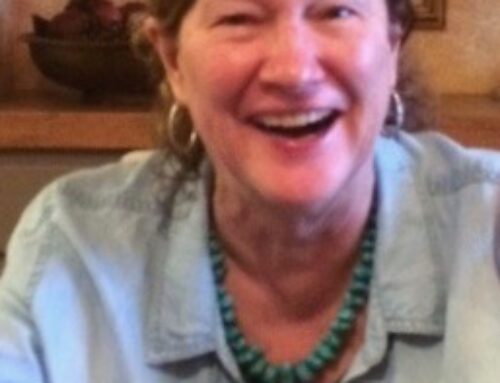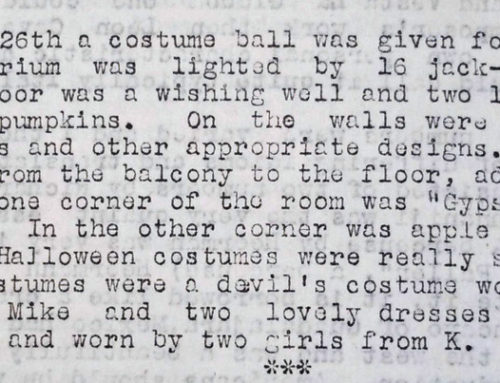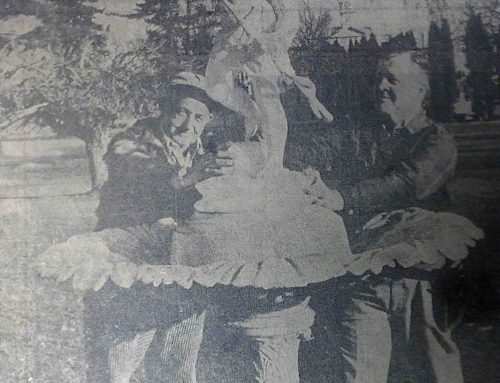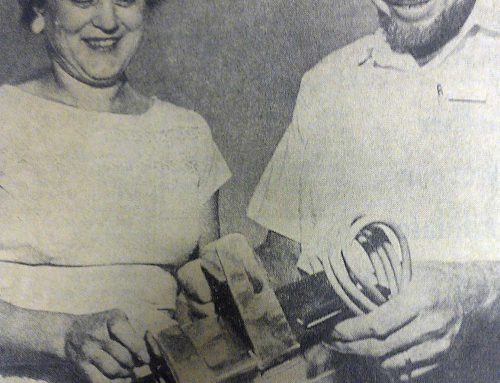Impressions and Observations of the Journal Man
By Fred Lockley
9/1/1926
Here begins an installment story of the career of a pioneer physician of Portland, who came hither in 1867. A second chapter is forthcoming.
Dr. S.E. Josephi is, in point of service, dean of the medical profession of Portland. When I interviewed him recently at his office in the Corbett building, he said:
***
“I was born in New York city on December 3, 1849. My father, Edward Josephi[2], with his brothers Henry and Isaac, conducted a wholesale jewelry establishment in Maiden Lane. My father was born at what was then St. Petersburg but is now Leningrad, Russia. My mother’s maiden name was Sarah Mendoza. Her parents were Spanish but she was born in England. You can see that I am a product of the melting pot. There eight of us children. I had five sisters and two brothers.[3] I went to school to Professor Quackenbos. He had a private school in New York city at that time and was the author of an arithmetic that was very popular. Later I attended the public schools of New York city and still later the Free Academy, now known as the New York college. I secured work as a clerk in a wholesale hat house.
***
My oldest brother, David Josephi, had gone to San Francisco as manager of the San Francisco branch of I & S Josephi & Co., wholesale jewelers. In 1866, when I was 17 years old, I had a bad attack of wanderlust. I wanted to see the world, so I went out to San Francisco to visit my brother David. After I had been in San Francisco about six months Dr. Loryea of Portland dropped in to visit my brother David. David introduced me to Dr. Loryea, who inquired as to my plans. When he learned that I was a clerk and understood bookkeeping, he said, ‘Dr. J.C. Hawthorne and myself have the contract from the state for the care of the insane. Our hospital is in Portland. If you want to come up to Portland and take a look around and see if you like the country, you can work for us keeping books and doing clerical work.’ I agreed to go to Portland and work for Drs. Loryea and Hawthorne for six months.
I will never forget my introduction to Portland. I came up aboard the Oriflamme, Ben Holladay’s favorite steamer and flagship. We reached Portland on the evening of February 4, 1867. For a day or two there had been a continuous rain and storm. The river was high, the wind was blowing a gale, and when the captain got the hawser out to draw us into the dock it snapped and we drifted back into the stream. Once more the Hawser was attached to the dock, and again the wind and current snapped it, so we dropped anchor and stayed out in the stream till morning. Next morning I was met by an attendant from the hospital and taken by horse and buggy across the Stark street steam ferry to East Portland and driven to the hospital. In those days the ferry ran only during daylight. If you wanted to cross the Willamette to Portland after dusk you stood on the bank and called across to the ferryman, who came over in a rowboat to get you.
***
I had not worked at the asylum long when Dr. Hawthorne [illegible] that I take up the study of medicine. At that time the practice was that a physician must study one year under a preceptor and spend two years at college before he could secure his medical degree. Dr. Hawthorne was a very capable physician and a likeable man. He was born in Pennsylvania in 1819. He graduated from the Medical university at Louisville, Ky. In 1850 he located at Auburn, Placer county, California, where he was engaged not only in general practice but also in hospital work. He served as state senator from Placer county for two terms. In 1857 he came to Portland and engaged in practice. The following year he was given a contract by the county commissioners to take charge of the county hospital. Governor Whiteaker gave him the contract to care for Oregon’s insane. For 21 years he had charge of the Oregon hospital for the Insane. He was a specialist in nervous diseases, having made a deep study along this line and also in the treatment of the insane.
**
I worked as clerk at the hospital for the insane for two years, putting in my spare time studying medicine. Dr. Hawthorne, who had the contract for the county hospital also, maintained this hospital in the rear of the building in which the insane patients were quartered. There were usually from half a dozen to a dozen patients in the county hospital, so this gave me some clinical opportunities. In 1869 I went back to New York city to take my medical course at Bellevue. I was unable to arrange my financial affairs to be able to graduate, so I returned to Portland, resuming my work at the hospital. In 1869 there were several banks in Portland, among them the Bank of Oregon, or which Ladd and Tilton were the proprietors; the Bank of British Columbia, the First National bank, the bank of Wells Fargo & Co., and on the east side of the river, in what was then the city of East Portland, was the bank of Stephens and Loryea. On account of my familiarity with bookkeeping methods and accounts, Dr. Loryea offered me a position at the bank. I divided my time between my work for Dr. Hawthorne in the hospital and my work at the bank. Later I took a position with Hamilton Boyd, agent for a well known insurance company. While working for Mr. Boyd I took a course in commercial law.
**
Medical Students in Toland Medical College Dissecting Room, ca 1870. Photo by Eadweard Muybridge (Courtesy of the Bancroft Library, UC Berkeley).
I still continued my medical studies. I studied from 5 am till breakfast put in the day at my work, and resumed my study in the evening. When I had saved sufficient money to see me through college I went to San Francisco and entered Toland Medical school, which later became the medical department of the University of California. I graduated in 1877, 49 years ago. Dr. Hawthorne offered me a place as assistant physician of the hospital. I accepted the place, and when Dr. Hawthorne died in February 1881, I became medical superintendent of the hospital, continuing in this position till 1883 when the insane patients were moved to a building that had been [illegible] in Salem.”
END PART 1
The history of a number of institutions devoted to the art of healing is told by Dr. Josephi in the second of two installments of his narration, he speaking from first hand knowledge of their inception and growth.
“When I came to Portland on February 4, 1867, I had not intention of staying here more than six months.” Said Dr. Josephi, when I interviewed him recently. “ I came as a bookkeeper and clerk for Drs. Hawthorne and Loryea, who were operating the Oregon hospital for the Insane on Asylum avenue, now Hawthorne Avenue, in East Portland. Before I had been there long I began reading medical works, and almost before I knew it I changed my life plans and in place of being a merchant or a business man I decided to be a physician. I graduate from what is now the medical department of the University of California, in 1877, and became assistant physician at the hospital for the insane in East Portland. When Dr. Hawthorne died, in February, 1881, I became medical superintendent, and continued in this position till 1883, when the patients were moved to Salem and Dr. Carpenter became superintendent of the state insane asylum. He resigned in 1886 and I was appointed by the board consisting of Governor Z. F. Moody, Ed Hirsch, treasurer, and Rocky P. Earhart, secretary of state, as his successor. I married Miss Hannah M. Stone on April 27, 1871. I resigned in July, 1887, to resume my medical practice in Portland.
**
For several years prior to taking up the practice of medicine, I was engaged in business. I studied commercial law, was an expert bookkeeper, and was familiar with business practice. I found that this commercial training was invaluable to me in many ways. For example, I have served as treasurer of the Good Samaritan hospital for the past 36 years, and you can readily understand how useful the knowledge of business I acquired has been in this position. Some day you must get a story from Miss Loveridge[4]. I believe she is the only woman at the head of a Protestant hospital as large as the Good Samaritan in the united States. She came here from Bellevue training school to be head of the nurses’ training school when Miss Wakeman, the superintendent of Good Samaritan hospital died, Miss Loveridge succeeded her.
**
I was the first den of the school of medicine of the University of Oregon, and I have served as dean for 25 years. Here is a letter that I value greatly from President P.L. Campbell of the University of Oregon, in which he notifies me that on June 16, 1924, the degree of doctor of laws was conferred upon me.
**
For many years I was a member and secretary of the Port of Portland. Iresigned on February 14, 189 [8?]. I was president of the Medical College association when it was started here in Portland. The faculty of the school organized a corporation to erect a building. We borrowed on our personal note $1000 from the First National bank with which to put up a building on the grounds now occupied by the Good Samaritan hospital. The lecture room was below, and on the upper floor we had a dissecting laboratory. Mathew P. Deady was president of the board of regents and professor of medical jurisprudence. I was the dean of the faculty, and among the other members of the faculty were Dr. Curtis C. Strong, who was secretary; Dr. H C. [illegible], Dr. Otto [illegible]…
A.C. Panton, Dr. J.R. Bell, Dr. M. A. Flinn, Dr. G. M. Wells, Dr. Henry E. Jones, Dr. A. J. Geisy, Dr. F. B Eaton, Dr. W.H. Saylor, Dr. Richard Nunn, Dr. Thomas B. Carey, and Dr. Arthur D. Bevin, who is now at the head of the department of surgery of the Rush Medical college. Before becoming dean of the medical department of the University of Oregon, I was on the faculty of the medical college of Willamette university. In 1878, shortly after I started practice in Portland, I became professor of genitor-urinary and surgical anatomy. The medical college at Willamette university moved from Salem to Portland in 1878. They were located on Fourth street between Morrison and Yamhill, but in 1885 they erected a building on the corner of 14th and C Streets. When I became a member of the faculty, Drs. L.L Rowland, Shapies, Peyton, Watkins, Gilson, Harvey, Plummer (who by the by was dean of the faculty), Rex. Fraser, Wilson, Alden and Deady were members of the faculty.
**
In 1891 we organized a corporation, of which I was a member, to erect a building for the University of Oregon medical school at the corner of Lovejoy and 23rd Streets. When the school burned, we sold the ground and moved the school to Marquam Hill. I have served as treasurer of the Good Samaritan hospital since 1890.
**
Mayor George H. Williams appointed me a member of the water commission of Portland. Governor Moody appointed me a member of the state board of pardons, and right here is a good place to say that I believe the pardoning power should be in the hands of the board of control in place of being vested in the governor. I served two terms in the state senate, 1889 and 1901. I also served as a first lieutenant in the medical reserve corps of the United States army. After lecturing on various medical subjects for 40 years, in the Willamette university and later in the University of Oregon, I finally retired and became emeritus dean and professor of nervous and mental diseases of the University of Oregon.
**
For many years I have been senior warden at St. David’s church. I am a member and an ex-president of the Portland Medical society. In fact, I was one of the organizers and served as the first president. I also helped organize the Portland Academy of Medicine and am a fellow of the American Medical association and a member of the American Protestant Hospital association.
**
Three of our five children are living. Our daughter Hannah Louise Joesphi, for the past ten years head of the social service department of the New York hospital, is spending her vacation with us now. Our daughter Mary Helen married George C. Durham. They live in Portland. Our daughter Rachel Frances married Colonel George William Helms. He is executive officer of the infantry school at Fort Benning, Ga. Our son, Hawthorne M. Josephi, while a student at Stanford, was working during his vacation for the Portland Electric company. He was 18 years old. On August 16, 1899, he rode his bicycle home and was caught in a hard rain. He went to the bathroom to take a bath and found the electric light was not working properly. Standing on an iron register in his wet clothes, he attempted to fix the light and was instantly killed. My wife and I have never recovered from the grief at his death.
[1] These are the dates given in the article. The dates of his tenure as superintendent of OSIA have elsewhere been given as: December 1, 1885-June 30, 1886.
[2] Edward Josephi is listed enumerated as a Jeweller in the 1850 census living in the 6th District of New York City with his family. He was naturalized August 21, 1859.
[3] 1850 Federal census lists the Josephi family children as:
Marial Joesphi (female) 8
David Josephi (male) 5
Isabella Joesphi (female) 4
Marcus Josephi (male) 3
Simeon Jeosephi (male) 1/12
[4] Emily L. Loveridge was superintendent of the Good Samaritan Hospital in Portland. Her biography is included in Charles Carey’s History of Oregon. Text can be found here: http://www.ebooksread.com/authors-eng/charles-henry-carey/history-of-oregon-volume-2-era/page-55-history-of-oregon-volume-2-era.shtml





